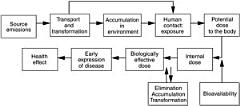A fundamental challenge in past studies evaluating whether health problems experienced by Vietnam veterans might be linked to wartime use of Agent Orange or other herbicides has been a lack of information about the veterans' level of exposure to these herbicides. To address that problem, researchers developed a model to assess the opportunity for herbicide exposure among these veterans.
The Utility of Proximity-Based Herbicide Exposure Assessment in Epidemiologic Studies of Vietnam Veterans presents the conclusions and recommendations of an Institute of Medicine committee (IOM) that was convened to provide guidance to the Department of Veterans Affairs (VA) about the best use of a model to characterize exposure to the troops based on their proximity to herbicide spraying in Vietnam. This book's assessment is guided by four primary considerations: to be clear about what the assessment model does and does not claim to do; to gain understanding of the strengths and limitations of data on herbicide spraying, troop locations, and health outcomes; to consider whether the model locates spraying and troops accurately to consider the potential contributions and pitfalls of using it in epidemiologic studies. Of particular interest in these deliberations were the degree to which exposure classification might be improved if the model were to be used, and the appropriate interpretation of the results of any such studies.
In light of the questions that remain concerning herbicide exposure and health among Vietnam veterans and the array of evidence that has thus far been brought to bear on that issue, The Utility of Proximity-Based Herbicide Exposure Assessment in Epidemiologic Studies of Vietnam Veterans concludes that the application of this model offers a constructive approach to extending knowledge about the effects of herbicides on the health of these veterans and merits the initial steps recommended in our report.

